- europages
- >
- COMPANIES - SUPPLIERS - SERVICE PROVIDERS
- >
- transducer sensors
Results for
Transducer sensors - Import export

IGUS® GMBH
Germany
Initiator cables, also referred to as sensor/actuator cables, connect control units and different sensors, or, in the case of reversal of the measurement principle, actuators. Frequently used abbreviations include ini or ini cable (plural: inis). Sensor or measurement transducers transform physical quantities such as rotation, speed, distance or length into analogue electric impulses. In the case of an actuator, the measured electric current (symbol: I, unit: ampere; A) or voltage (symbol: U, unit: volt; V) is transformed into temperature, pressure or torque. The connection cable consists of at least three cores with a small cross-section of between 0.14mm² and 0.34mm². In the simplest case, two cores are required for supplying the voltage, while the last core transmits an I/O signal. For sensitive applications, there are shielded versions in addition to the traditional ini cables to avoid EMC disruptions (electromagnetic compatibility).
Request for a quote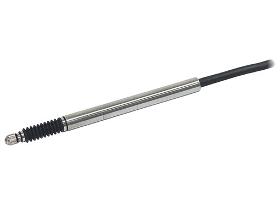
BURSTER PRÄZISIONSMESSTECHNIK GMBH & CO KG
Germany
Incremental magnetic measuring heads offer maximum precision over the full range of measurements. As a result of the magnetic operating principle and the robust mechanical construction, they are insensitive to soiling and are therefore ideally suited to use in production facilities. Thanks to the high quality of their measurements, their high protection and long service life, these sensors are used in many technologies (industry, research, development etc.). Typical applications include: —Monitoring both slow and fast movements between machine parts —Measurements of position and positional changes in components and structural foundations, of servo regulators, valve and robot controllers —Measurement of growth, and so on The incremental displacement sensors are based on a magnetic principle: consisting of a magnetic scale and a multi-slot reading head that responds to changes in magnetic flux, they detect linear movements with high precision and resolution.
Request for a quote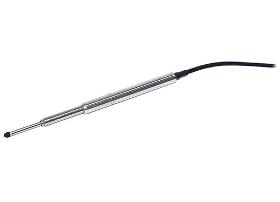
BURSTER PRÄZISIONSMESSTECHNIK GMBH & CO KG
Germany
Incremental magnetic measuring heads offer maximum precision over the full range of measurements. As a result of the magnetic operating principle and the robust mechanical construction, they are insensitive to soiling and are therefore ideally suited to use in production facilities. Thanks to the high quality of their measurements, their high protection and long service life, these sensors are used in many technologies (industry, research, development etc.). Typical applications include: —Monitoring both slow and fast movements between machine parts —Measurements of position and positional changes in components and structural foundations, of servo regulators, valve and robot controllers —Measurement of growth, and so on The incremental displacement sensors are based on a magnetic principle: consisting of a magnetic scale and a multi-slot reading head that responds to changes in magnetic flux, they detect linear movements with high precision and resolution.
Request for a quote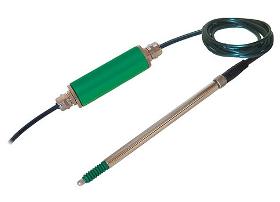
BURSTER PRÄZISIONSMESSTECHNIK GMBH & CO KG
Germany
Inductive displacement sensors of this series measure linear displacements and indirectly all mechanical values convertible into displacements by additional equipment (i.e. tension and compression forces, extension, torque, vibration). The sensor body equipped with a connector has an outer diameter of only 8 mm and therefore is especially well suitable for the integration in dimensionally restricted structures. Typical application fields are displacement and extension measurements on: —Machines —Servo systems —Motor vehicles —Test benches —Production plants The cylindrical case made of stainless steel, houses a differential transformer (LVDT). It consists of a primary and two secondary coils with axially moveable core. A displacement of this core changes the magnetic induction of the coils. The INLINE carrier frequency amplifier converts the displacement into a direct proportional electrical DC voltage.
Request for a quote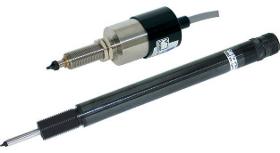
BURSTER PRÄZISIONSMESSTECHNIK GMBH & CO KG
Germany
Linear displacements and mechanical values which can be converted to displacements (e.g. compressive and tensile force, strain, torque and vibration) may be measured by these DC/DC displacement sensors. The probe tip of these sensors is pushed onto the measuring object by a spring. This makes it possible to use these sensors were a mechanical modification of the measurement object (mounting hole) is not allowed or difficult. Output voltage as function of the displacement with the impedance as parameter. Sensors of series 87350 generally consist of an oscillator, a demodulator and a transformer with moveable core. They are energized by DC voltage. The oscillator uses this DC voltage to generate the carrier frequency, which is needed for the operation of the sensor. Dependent on the position of the core, which is made of ferromagnetic material, voltages are induced by the two secondary coils of the transformer.
Request for a quote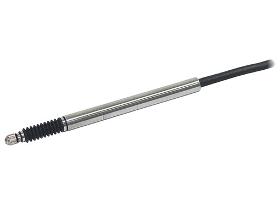
BURSTER PRÄZISIONSMESSTECHNIK GMBH & CO KG
Germany
Incremental magnetic measuring heads offer maximum precision over the full range of measurements. As a result of the magnetic operating principle and the robust mechanical construction, they are insensitive to soiling and are therefore ideally suited to use in production facilities. Thanks to the high quality of their measurements, their high protection and long service life, these sensors are used in many technologies (industry, research, development etc.). Typical applications include: —Monitoring both slow and fast movements between machine parts —Measurements of position and positional changes in components and structural foundations, of servo regulators, valve and robot controllers —Measurement of growth, and so on The incremental displacement sensors are based on a magnetic principle: consisting of a magnetic scale and a multi-slot reading head that responds to changes in magnetic flux, they detect linear movements with high precision and resolution.
Request for a quote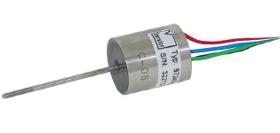
BURSTER PRÄZISIONSMESSTECHNIK GMBH & CO KG
Germany
Displacement and all mechanical values which can be converted to displacements (e.g. compressive and tensile force, strain, torque and vibration) may be measured by this DC/DC displacement sensor. Typical application areas are the measurement of displacement and strain on machines, servo systems, vehicles, on test plants, in civil engineering and tunnel construction. An integrated maintenance-free electronic and a high-level DC output signal provide an easy handling without any problems. Displacement sensors of series 87240 convert a displacement into an analog electrical signal. They consist of a differential transformer with moveable core, an oscillator and a demodulator. These components are integrated and encapsulated in a cylindrical housing made of stainless steel. The sensors are energized by DC voltage, which is converted to AC by the oscillator and brought to the primary coil of differential transformer.
Request for a quote
BURSTER PRÄZISIONSMESSTECHNIK GMBH & CO KG
Germany
These displacement sensors are potentiometric displacement sensors used for direct measurement, testing and monitoring of mechanical displacements. The spring-loaded control rod eliminates the need of coupling with the measurement object. A prerequisite for a very long life duration of the devices is a parallel alignment of the motion direction of the measurement object and the rod. Areas of application are: Displacement on: —Electromagnets —Hydraulic cylinders —Switches and buttons Measurements of: —Deformation —Bending —Press-fits —Feed strokes Due to the technology employed in potentiometric displacement sensors, they always operate with a sliding contact system. FEATURES: —Measurement ranges: 0 ... 10 mm to 0 ... 150 mm —Non-linearity up to 0.05 % F.S. —Resolution 0.01 mm —Follower roll on request —Optional with internal spring
Request for a quote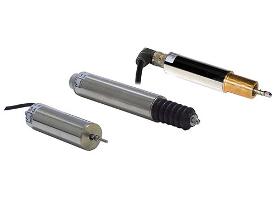
BURSTER PRÄZISIONSMESSTECHNIK GMBH & CO KG
Germany
Inductive displacement sensors using the principle of the differential transformer (LVDT) can be used to measure displacement and, indirectly, magnitudes that can be converted into displacements such as force, pressure, strain, torque, vibration and so forth. Thanks to the high quality of their measurements, their high protection and long service life, these sensors are used in many technologies (industry, research, development, etc.). Applications include measuring, controlling, regulating and monitoring both slow and fast movements between machine parts, measurements of position and positional changes of components and structural foundations, servo regulators, valve and robot controllers, growth measurements and so on. Their design is robust - the internal coils and electronics are potted - as a result of which the sensors can easily withstand shock and vibration.
Request for a quote
EDDYLAB GMBH
Germany
The SM series offers ultimate reliability and precision in a small size, and is designed for industrial and lab use. With a measuring range from 2 up to 200 mm and various configuration options (mechanics, protection class, temperature range, linearity) the SM series ensures to have a suitable measuring system for every application. ■ High precision and linearity ■ Various configuration options ■ Push-rod guided and unguided, spring loaded ■ Stainless steel housing ■ Linearity up to 0,10 % ■ Measuring range 2...200 mm
Request for a quote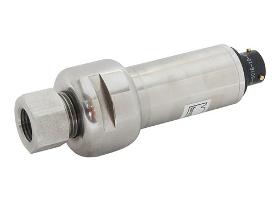
BURSTER PRÄZISIONSMESSTECHNIK GMBH & CO KG
Germany
The reliability and safety of a sensor is extremely important, particularly in high-pressure applications such as water-jet cutting equipment and hydraulic circuits. The dynamic loading encountered in these applications requires the use of sensors that are specially adapted for high pressure ranges. It is exactly these tough requirements that are satisfied by the model number 8221 sensor. With dynamic pressures, for example, an unlimited number of measurements can be taken if the pressure lies within the range from 0 ... 70% full scale. Range of applications: —Laboratory —Production —Aeronautical engineering —Cutting equipment —Hydraulics —Test benches Specific characteristics: —Measuring ranges from 0 ... 1000 bar to 0 ... 5000 bar —Accuracy ≤ 0.2 % F.S. —Medium temperature range from - 30 °C ... 120 °C —Ideal for dynamic measurements —Protection class IP66 —Digital calibration with the option of integrated instrumentation amplifier
Request for a quote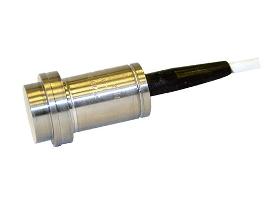
BURSTER PRÄZISIONSMESSTECHNIK GMBH & CO KG
Germany
This transducer can be used anywhere thanks to its small size. Designed to work without a measuring chamber (uses a flush front diaphragm instead), this transducer is ideal for any measurements where the material to be measured may leave problematic residues. The range of suitable applications is even greater thanks to a choice of screw-on or weld-on adapters. Areas of use: Bottling plants, food industry Mixing facilities for the chemicals industry Pharmaceuticals Cosmetics industry Bioengineering These miniature pressure transducers are made entirely of titanium and therefore have outstanding resistance to corrosion. These convert the pressure-induced deflection of the diaphragm into a change in electrical resistance, which can be amplified, measured and processed by external electronic circuitry.
Request for a quote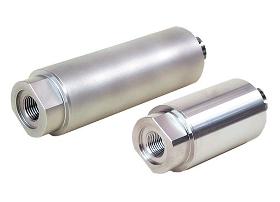
BURSTER PRÄZISIONSMESSTECHNIK GMBH & CO KG
Germany
High-precision pressure sensors from the 8201 series provide exact measurements while exhibiting very little sensitivity to mechanical stresses. Their application therefore goes well beyond research and development laboratories. They are also outstandingly suited to industrial use in quality assurance or for measurement and control tasks in production. Their robust mechanical and electrical construction guarantees good long-term stability and high reliability, while being resistant to aggressive media – which can be measured in liquid or gaseous states. The structure of the sensors includes no mechanical moving parts, which is why they show so little sensitivity to impact and vibration. The pressure sensors can be configured with options to suit the user. Standard types are available ex-stock, and customized customer versions can also be provided. Aeras of application are: —Research and developmemt —Test rigs —Mechanical engineering —Plant control and monitoring
Request for a quote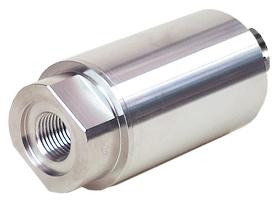
BURSTER PRÄZISIONSMESSTECHNIK GMBH & CO KG
Germany
Model number 8201 precision pressure sensors are robust, economical, and are available in standard measuring ranges. Their good technical specification and high reliability make them optimum for measuring pressure in all fields of machine construction, process technology, as well as in measurement and control technology. The pressure transducers are easy to handle and immune to shock loads and vibrations as they are designed without moving parts. All pressure transducers without an internal amplifier have a standardized output signal of 1.0 mV/V. This enables the user to change a transducer in a measuring chain as liked without following readjustment of the electronic. Customized designs are available on request. Aeras of application are: —Hydraulic or pneumatic machines —Mechanical engineering —Plant control and monitoring The measuring element of the precision pressure transducer consists of a diaphragm.
Request for a quote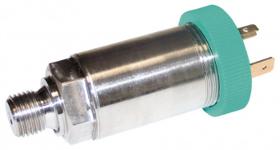
BURSTER PRÄZISIONSMESSTECHNIK GMBH & CO KG
Germany
With its rugged housing and a stainless steel sensor element, the transducer is particularly robust and ideally suited to the harshest environments. This also means that the sensor can be installed anywhere with no effect on the measurement signal. The built-in instrumentation amplifier converts the sensor signals into noise-immune voltage signals or current signals that can be transmitted over relatively long distances. For high viscose materials, a front-level membrane M12 x 1 is available, and with this disruptive dead volumes can be expelled. The sensor has a small protected hole on the rear to allow measurement of atmospheric pressure (measurement type relative). For the absolute measurement option, the applied pressure is measured with respect to an enclosed vacuum. As an electrical connection, a DIN 43650A valve connector or an M12 x 1, 4-pin connection is available.
Request for a quote
B + B THERMO-TECHNIK GMBH
Germany
The calibrated humidity module with integrated NTC temperature sensor is a high runner among the B+B sensor transducers. The signal of the humidity sensor is transformed into a voltage output, whereas the NTC signal is analogue.
Request for a quote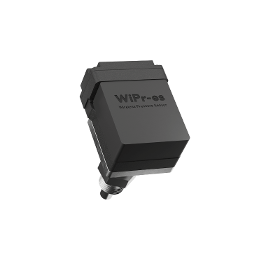
ESCOM ENHANCED SOLUTIONS
Turkey
Traditional in-pipe pressure sensors, including strain gauge pressure transducers and capacitive pressure sensors, have been essential in various industries for monitoring pressure variations. However, they present several drawbacks. These conventional sensors rely on wired connections for data transmission and power supply, necessitating complex and extensive cabling infrastructure. Cable trays and platforms must be installed to accommodate wiring, increasing costs and architectural requirements. Over time, cables are susceptible to deterioration, leading to signal loss, inaccurate measurements, and potential safety hazards. Regular maintenance is essential to address these issues, adding to operational expenses. Furthermore, the dependence on external power sources or batteries results in additional maintenance and environmental concerns related to battery disposal.
Request for a quoteDo you sell or make similar products?
Sign up to europages and have your products listed
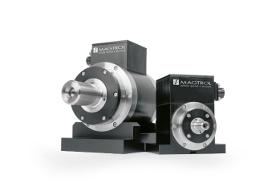
MAGTROL
Switzerland
Magtrol offers three types of torque transducers for dynamic torque and speed measurement. All three transducer models employ our unique non-contact differential transformer torque measuring technology. This measuring technology offers many benefits most notably that no electronic components rotate during operation. Each model has an integrated conditioning electronic module providing a 0 to ±10 VDC torque output and an open collector speed output. Magtrol’s Torque Transducers are very reliable, providing high overload protection, excellent long-term stability and high noise immunity.
Request for a quote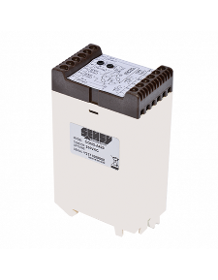
SENSY S.A.
Belgium
The CONDA420 conditioners amplifiers provide standardised signals in current and voltage from every load cell, force transducer and torque sensor based on straingauge technology. Sensor excitation 10 V (120 mA max.) available for up to 4 x 350 ohms. Load cells connected in parallel o DIN rail mounting
Request for a quote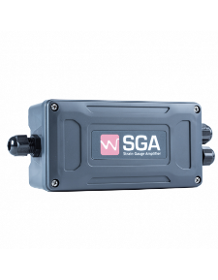
SENSY S.A.
Belgium
The CONDSGA conditioners amplifiers provide standardised signals in current and voltage from every load cell, force transducer and torque sensor based on straingauge technology. Power supply CONDSGAA 115...230 VAC / 18...24 VDC CONDSGAD 18...24 VDC
Request for a quote
GNEUSS KUNSTSTOFFTECHNIK GMBH
Germany
The DAP Series incorporate a heated sensor tip, which limits the potential for sensor damage relating to the membrane, resulting from installation or removal of the pressure transmitter. The Gneuss patented heated sensor tip allows the sensor to be easily removed from a “frozen” melt without any problems. The diaphragm is not damaged when the polymer contracts. The DAP has revolutionized the handling of critical medias, for example PC, PMMA or ABS.
Request for a quoteFLUKE DEUTSCHLAND GMBH
Germany
Sensors and accessories for vibration measurement and Condition Monitoring Large selection of vibration sensors accelerometers, displacement sensors, VIBCODE transducer and triaxial sensors Accelerometers measure vibration acceleration, shock pulse (roller bearing condition) and pump cavitation Also available in compact size, for lowspeed machines and as combi sensors for vibration and temperature Patented tandempiezo technology eliminates the disadvantages of conventional sensors Highquality signal transmission over long distances up to 1,000 meters (3,200 feet) with current line drive (CLD) signal amplification Various mounting types EX / ATEX versions available Temperature probes, keyphasers, cables, adaptors and tools available
Request for a quote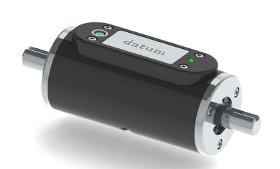
DATUM ELECTRONICS LTD
United Kingdom
The latest technology Datum Electronics Series non-contact rotary Torque Sensors have been designed to fit with most applications where the measurement of accurate rotary torque and power measurements are required. The M425 Rotary Torque Sensor fits in line with the drive train or test bed, using standard key-way shafts. The Datum M425 Rotary Torque Transducer represents a quantum leap forward for anyone looking to measure torque and power with high accuracy and repeatability using up to 24 bit resolution. The M425 torque sensors give the customer control over their tests with torque sample rates selectable at any time from 1sps up to 4000sps as standard. With rpm measurement based on up to 30 pulses per revolution, the M425 is now the complete torque transducer for measuring torque and power on any rotating shaft. When paired with the Datum Universal Interface (DUI), the M425 Torque Sensor gives customers a ... ** Click for more **
Request for a quote
DATUM ELECTRONICS LTD
United Kingdom
FF410 Static Torque Transducer provides a competitive option within the reaction transducer market Static Torque Sensor/Transducer FF410The Datum Electronics Series 410 Static torque sensor was developed following developments of our FF420 series of rotary torque transducers. The same basic shaft components and strain gauge technology have been applied to our 410 Reaction transducer range providing a competitive option within the static transducer market. SERIES 410 REACTION TORQUE TRANSDUCER - Flange Mounted static transducer - Flange torque transducer match standard DIN Flanges - Ideal design for easy fitting to test rigs and drive systems - No bearings with lightweight hollow shaft unit - Unique design offers high torsional stiffness model - Standard 410 reaction torque sensor range available from 250Nm-10,000Nm - Strain gauge output compatible with Datum Type310, Type324, Type 300 Indicators. ** Click for more **
Request for a quote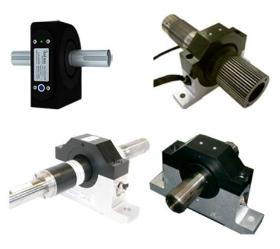
DATUM ELECTRONICS LTD
United Kingdom
The Datum Electronics Series RS425 bearingless torque transducer has been designed to fit easily in line with any drive-train or test rig, using either a spline or key-way shaft. We are able to modify the ends of the transducer to best suit your requirements, and can even design bespoke ends to fit. This type of transducer has many advantages over other torque systems including zero bearing friction, high speed and high torque applications. The Series 425 Torque Transducers can be adapted to replace exiting drive shafts on test rigs and in drive lines, this saves the time and cost of designing in special couplings and intermediate shafts to accommodate conventional transducers. By measuring torque on longer drive shaft you prove the accuracy of the measurement and its tolerance to offset loads. Using a direct replacement with a lightweight rotor the dynamics of the driveline are maintained. ** Click for more **
Request for a quote
DATUM ELECTRONICS LTD
United Kingdom
The latest technology Datum Electronics Series FF425 non-contact rotary torque transducer and FF410 torque sensors have been designed to fit easily inline with any drive train or test rig using standard DIN size couplings. With Flange couplings at either end of the torque transducer, it has many advantages over other torque measurement systems. FF425 Non-Contact Torque Transducers and Sensors The FF425 rotary torque transducer utilises a strain gauged shaft for accurate and reliable torque measurement and a set of rotating on shaft conditioning electronics, the digital signals are transmitted to the non-rotating part of the system or stator providing a reliable and highly accurate torque measurement solution. ** Click for more **
Request for a quote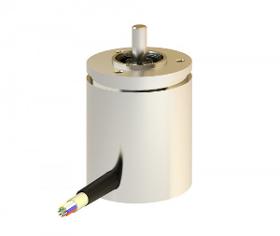
TWK-ELEKTRONIK GMBH
Germany
A CAN controller at the output enables integration into the CANopen network. According to CANopen Application Layer and Communication Profile, CiA Draft Standard 301, Version 4.1 and "Device Profile for Encoders CiA Draft Standard Proposal 406 Version 3.0" and CANopen Layer setting Services and Protocol (LSS), CiA DSP 305.
Request for a quote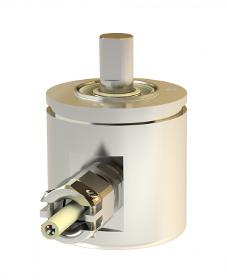
TWK-ELEKTRONIK GMBH
Germany
The angle transducers have a magnetic scanning according to the HALL principle. Due to the robust design, critical and interference-free applications in harsh environments can be realized. They have a robust housing (wall thickness > 5 mm) made of aluminium or stainless steel, shaft and ball bearing made of stainless steel, shaft with flattening, rotor with shaft and permanent magnet mounted in prechamber, sensor circuit consisting of ASIC with Hall elements and interface electronics housed in closed main chamber. Two models are available: For low and high temperature applications. The model for low-temperature use is equipped with a special grease for bearings and shaft seal. Seals and shaft seal are made of PTFE. Cable gland with clamping jaw pressure screw and silicone seal. The model for high temperature use is without shaft seal. Under the rear cover there is a signal changeover switch (CW/CCW). On the side there is a preset button (4 mA) placed under a screw plug.
Request for a quote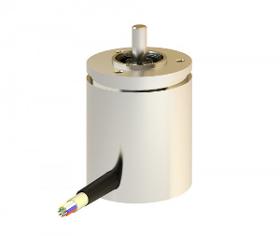
TWK-ELEKTRONIK GMBH
Germany
Robust case either in seawater resistant aluminum or in stainless steel - shaft in stainless steel - rotating components with permanent magnet in front chamber - electronic circuit with ASiC and Hall elements and interface components fitted within main chamber, separated from rotating components by a metallic wall - optional potting against water jets (IP 69K) - electrical connections via cable leads with inspection plug.
Request for a quoteResults for
Transducer sensors - Import exportNumber of results
71 ProductsCompany type